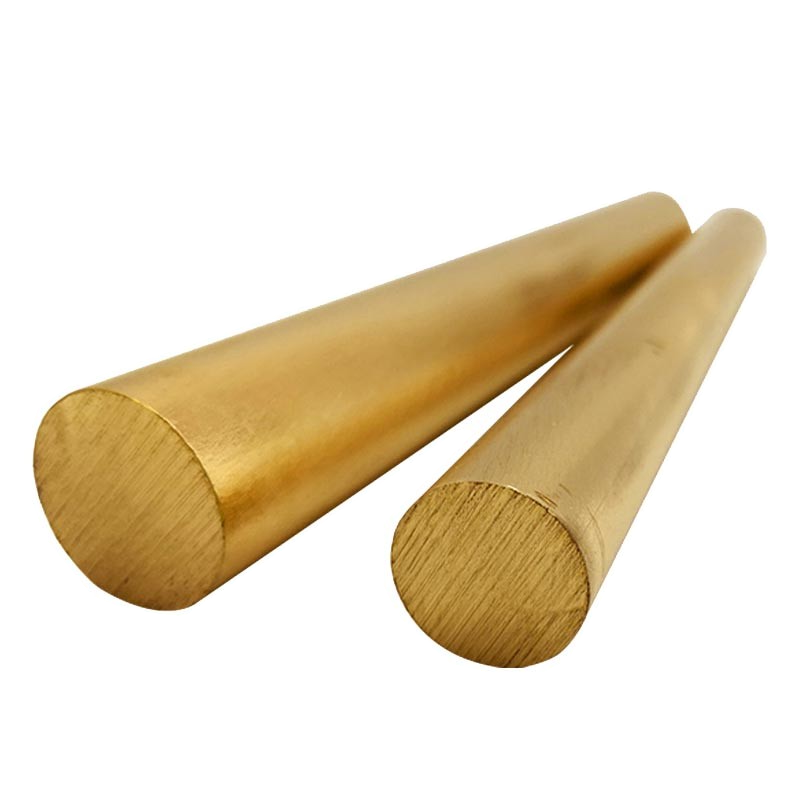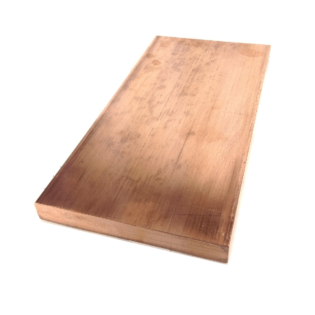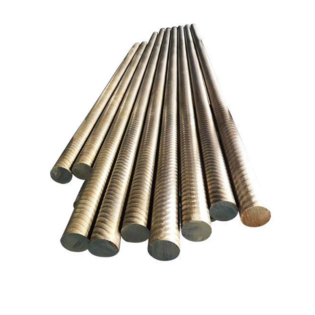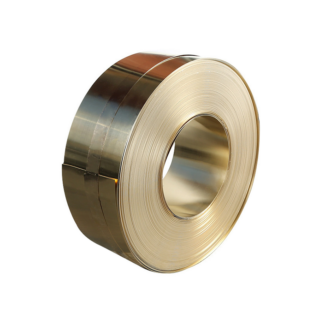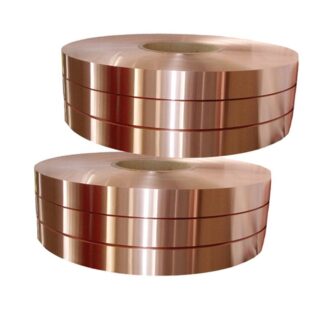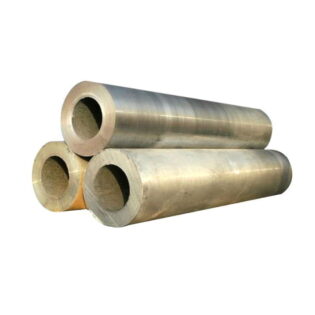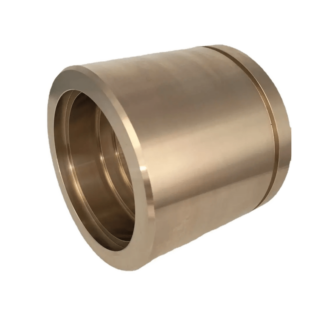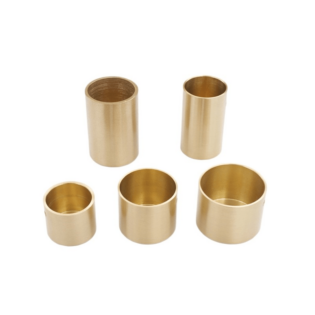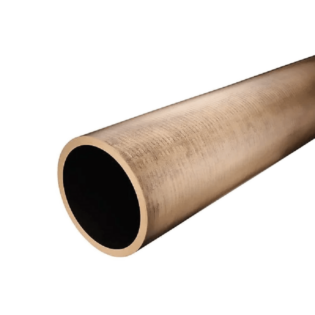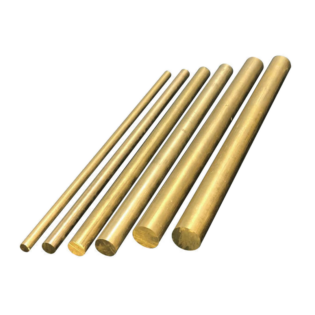Opis C36000
Bezpłatne mosiądz C36000 jest wysokowydajnym stopem miedzi-Zinc-Zinc zaprojektowanym specjalnie dla doskonałej maszyny. Zawierający 2,5-3,0% ołowiu dla zwiększonych charakterystyk cięcia, ten stop zapewnia wyjątkową kontrolę wiórów, rozszerzoną żywotność narzędzia i doskonałe wykończenia powierzchni. Z oceną maszynowości 100% (standard branżowy), C36000 umożliwia szybką produkcję komponentów precyzyjnych przy jednoczesnym zachowaniu doskonałych właściwości mechanicznych i dobrej odporności na korozję.
Szybkie specyfikacje
C36000 Free Cutting Brass - Wprowadzenie produktu technicznego
Przegląd produktu
Bezpłatny mosiądz C36000, znany również jako Alloy 360 lub bezpłatny mosiądz obróbki, jest stopem miedzi-zincowym specjalnie zaprojektowanym dla wyjątkowej maszyny. Stop ten obejmuje kontrolowane ilości ołowiu do znacznego zwiększenia charakterystyki cięcia, co czyni go standardem branżowym dla szybkich operacji obróbki i produkcji komponentów precyzyjnych.
Kluczowe funkcje techniczne
| Funkcja | Specyfikacja | Przewaga techniczna |
|---|---|---|
| Ocena obrabialności | 100% (standard branżowy) | Najszybsze prędkości cięcia, najlepsza kontrola chipów |
| Zawartość ołowiu | 2,5-3,0% | Optymalne łamanie chipów i smarowanie narzędzi |
| Możliwość wykończenia powierzchni | RA 0,4-0,8 μm | Wymagane minimalne wtórne wykończenie |
| Przewodność cieplna | 115 W/m · k | Doskonałe rozpraszanie ciepła podczas obróbki |
| Przewodnictwo elektryczne | 26% IAC | Nadaje się do zastosowań elektrycznych |
| Odporność na korozję | Dobre w warunkach atmosferycznych | Długoterminowa trwałość w większości środowisk |
Skład chemiczny
Standardowy skład chemiczny (ASTM B16)
| Element | Treść (%) | Funkcjonować | Typowa analiza |
|---|---|---|---|
| Miedź | 60.0-63.0 | Metal bazowy dla siły i przewodności | 61,5 |
| Cynk (Zn) | Reszta | Ulepszenie siły i optymalizacja kosztów | 35.5 |
| Ołów (Pb) | 2.5-3.0 | Ulepszenie i kontrola wiórów | 2.8 |
| żelazo (Fe) | ≤0,35 | Kontrolowane zanieczyszczenie | 0.15 |
| Nikiel (Ni) | ≤0,5 | Niewielki element stopowy | 00,25 |
| Aluminium (Al) | ≤0,05 | Odtleniacz | 00,02 |
| Inne elementy | ≤0,5 Łącznie | Kontrolowane zanieczyszczenia | – |
Porównanie składu z powiązanymi stopami
| Stop | Cu (%) | Zn (%) | PB (%) | Główna cecha |
|---|---|---|---|---|
| C36000 | 60.0-63.0 | Rem | 2.5-3.0 | Doskonała maszyna |
| C26000 | 68,5-71.5 | Rem | – | Wysoka plastyczność |
| C38500 | 56.0-59.0 | Rem | 2,5-3,5 | Aplikacje architektoniczne |
| C46400 | 59,0-62.0 | Rem | – | Mosiądz morski |
| C35300 | 60.0-63.0 | Rem | 1,5-2.5 | Średnia zawartość ołowiu |
Właściwości mechaniczne
Właściwości mechaniczne według stanu temperamentu
| Oznaczenie temperamentu | Wytrzymałość na rozciąganie (MPa) | Granica plastyczności (MPa) | Wydłużenie (%) | Twardość (RB) | Zmniejszenie obszaru (%) |
|---|---|---|---|---|---|
| O61 (wyżarzony) | 338-380 | 124-140 | 45-53 | 50-60 | 55-65 |
| H01 (1/4 twarde) | 370-415 | 140-310 | 25-35 | 62-75 | 45-55 |
| H02 (1/2 twardy) | 415-450 | 165-345 | 20-30 | 75-85 | 35-45 |
| H04 (pełny twardy) | 450-485 | 180-380 | 15-25 | 80-90 | 25-35 |
Zmęczenie i właściwości uderzenia
| Nieruchomość | Wartość | Warunek testowy | Standard |
|---|---|---|---|
| Siła zmęczenia | 140-160 MPa | 10⁸ cykli, obracająca się wiązka | ASTM D7791 |
| Siła uderzenia | 35-45 J. | Charpy V-Notch, temperatura pokojowa | ASTM E23 |
| Wytrzymałość złamania | 45-55 MPA√m | Warunki odkształcenia płaskiego | ASTM E399 |
| Limit wytrzymałości | 130-150 MPa | W pełni odwrócone ładowanie | ASTM D7791 |
Właściwości fizyczne
Właściwości termiczne i elektryczne
| Nieruchomość | Wartość | Jednostka | Temperatura (°C) | Metoda badania |
|---|---|---|---|---|
| Gęstość | 8.49 | g/cm³ | 20 | ASTM B311 |
| Punktem topnienia (solidus) | 885 | °C | – | Analiza DSC |
| Topia topnienia (ciecz) | 900 | °C | – | Analiza DSC |
| Przewodność cieplna | 115 | W/m · k | 20 | ASTM E1461 |
| Przewodność cieplna | 125 | W/m · k | 100 | ASTM E1461 |
| Przewodnictwo elektryczne | 26 | % IACS | 20 | ASTM B193 |
| Rezystancja | 0.066 | μΩ·m | 20 | ASTM B193 |
Właściwości rozszerzania termicznego i modułu
| Nieruchomość | Wartość | Jednostka | Zakres temperatur | Standard |
|---|---|---|---|---|
| Współczynnik rozszerzenia liniowej | 20,5 | μM/M · ° C. | 20-100°C | ASTM E831 |
| Współczynnik rozszerzenia liniowej | 21.0 | μM/M · ° C. | 20-200°C | ASTM E831 |
| Moduł sprężystości | 97 | GPa | 20°C | ASTM E111 |
| Moduł ścinania | 37 | GPa | 20°C | ASTM E143 |
| Współczynnik Poissona | 00,34 | – | 20°C | ASTM E132 |
| Specyficzna pojemność cieplna | 377 | J/kg · k | 20°C | ASTM E1269 |
Charakterystyka maszynowości
Optymalne parametry obróbki
| Działanie | Prędkość (m/min) | Szybkość zasilania (MM/Rev) | Głębokość cięcia (mm) | Geometria narzędzia | Wykończenie powierzchni (RA μm) |
|---|---|---|---|---|---|
| Turning - szorstkie | 150-300 | 00,25-0,50 | 2.0-5.0 | CNMG, DNMG | 1.6-3.2 |
| Turning - wykończenie | 200-400 | 0.05-0.20 | 0.5-2.0 | CNMG, VCMT | 00,4-0,8 |
| Mielenie twarzy | 100-200 | 0.10-0.30 | 1.0-3.0 | Wkładka młyna do twarzy | 0.8-1.6 |
| Koniec mielenia | 80-150 | 0.08-0.20 | 1,0-2,0 | Młyn końcowy węglika | 0.8-1.6 |
| Wiercenie (HSS) | 30-60 | 0.10-0.30 | – | 118 ° Kąt punktu | 1.6-3.2 |
| Wiercenie (węglika) | 60-120 | 00,15-0,35 | – | 130 ° kąt punktu | 1.6-3.2 |
| Rozwierc | 15-30 | 00,20-0,50 | 0.1-0.3 | Prosty flet | 00,4-0,8 |
| Gwintowanie | 20-40 | Zależne od skoku | – | Narzędzie gwintowania 60 ° | 1.6-3.2 |
Wydajność życia narzędzia i obróbki
| Materiał narzędzi tnąca | Względne życie narzędzia | Zalecana aplikacja | Zakres prędkości cięcia |
|---|---|---|---|
| Stal z dużą prędkością (HSS) | 100% (linia bazowa) | Ogólna obróbka, wiercenie, stukanie | 30-100 m/ja |
| Niepowlekany węglika | 200-300% | Szybki obrót, mielenie | 100-300 m/ja |
| Karen pokryty cyną | 300-400% | Rozszerzone aplikacje na narzędzia | 150-400 m/ja |
| Węgliek powlekany Tialn | 350-450% | Szybkie wykończenie | 200-500 m/ja |
| CBN (azotek boru sześciennego) | 500-800% | Ultra-prędkość obróbki | 300-800 m/ja |
Tworzenie i kontrola chipów
| Operacja obróbki | Typ chipów | Ocena kontroli chipów | Zalecana przerwa | Wzór zużycia narzędzia |
|---|---|---|---|---|
| Obrócenie | Krótkie, złamane żetony | Doskonały | Geometria wyłącznika chipów | Jednolite zużycie flanki |
| Przemiał | Małe segmenty | Bardzo dobry | Pozytywny kąt grabie | Zużycie narożne |
| Wiercenie | Żetony wstążki | Dobrze | Właściwa geometria punktowa | Zużycie flanki na marginesie |
| Gwintowanie | Drobne frytki | Doskonały | Ostry najnowocześniejszy krawędź | Minimalne zużycie |
Aplikacje i zastosowania
Podstawowe kategorie aplikacji
| Sektor przemysłowy | Przykłady składników | Wymagania dotyczące wydajności | Korzyści materialne |
|---|---|---|---|
| Automobilowy | Układy układu paliwowego, złączki linii hamulcowej, zaciski elektryczne | Precyzja, odporność na ciśnienie, odporność na korozję | Łatwa obróbka, ciasne tolerancje osiągalne |
| Elektryka/elektronika | Złącza, zaciski, komponenty przełączników, śruby uziemienia | Przewodność elektryczna, precyzja, niezawodność | Dobra przewodność, doskonała maszyna |
| Hydraulika/HVAC | Złącze rurowe, komponenty zaworów, złączki kompresyjne | Ocena ciśnienia, odporność na korozję, niezawodność | Opłacalne, dobre właściwości uszczelniające |
| Maszyny Przemysłowe | Przekładnie, tuleje, łożyska, mechaniczne elementy mocujące | Odporność na zużycie, stabilność wymiarowa, wytrzymałość | Samokrywanie treści wiodących |
| Sprzęt morski | Niekrytyczne elementy mocujące, dekoracyjny sprzęt | Odporność na korozję w środowiskach słodkowodnych | Dobra odporność na korozję atmosferyczną |
| Instrumenty muzyczne | Zespoły zaworów, szkiełka, komponenty mechaniczne | Płynna obsługa, precyzja, trwałość | Doskonałe możliwości wykończenia powierzchni |
Konkretne aplikacje komponentów
| Typ komponentu | Typowy zakres rozmiarów | Wymagania krytyczne | Proces produkcyjny |
|---|---|---|---|
| NPT gwintowane złączki | Od 1/8 ″ do 4 ″ rozmiar rury | Dokładność gwintu, uszczelnienie ciśnienia | Obracanie CNC, cięcie nici |
| Terminale elektryczne | Szerokość od 2 mm do 50 mm | Przewodność, zatrzymanie zacisku | Stamping, obróbka CNC |
| Ciała zaworów | Rozmiar portu od 1/4 ″ do 6 ″ | Ocena ciśnienia, szczelność | CNC Męk, wiercenie |
| Komponenty przekładni | Średnica od 10 mm do 300 mm | Dokładność zęba, odporność na zużycie | Cięcie biegów, obróbka cieplna |
| Tuleje/łożyska | Otwór od 5 mm do 150 mm | Dokładność wymiarowa, wykończenie powierzchniowe | Obracanie się, nudne, rozwiercone |
| Niestandardowe złącza | Specyficzne dla aplikacji | Właściwości elektryczne, tolerancje dopasowania | MODZINY CNC Multi-ais |
Wydajność w środowiskach serwisowych
| Środowisko | Odporność na korozję | Limit temperatury | Ocena przydatności | Ograniczenia |
|---|---|---|---|---|
| Indywa atmosferyczna | Doskonały | -40 ° C do +200 ° C. | Doskonały | Brak znaczący |
| Outdoor Atmospheric | Dobrze | -40 ° C do +150 ° C. | Dobrze | Zalecana regularna konserwacja |
| Świeża woda | Dobrze | 0° C do +80 ° C. | Dobrze | Unikaj stagnacji |
| Marine (woda morska) | Słaby | nie dotyczy | Niepolecane | Zamiast tego użyj mosiądzu morskiego |
| Chemikalia przemysłowe | Zmienny | Zależy od chemikalia | Ocena przypadków | Wymagane testowanie kompatybilności chemicznej |
| Wysoka temperatura | Dobrze | Do 200 ° C ciągły | Dobrze | Odporność na utlenianie Dopuszczalna |
Dostępne formularze produktów
Standardowe formy i wymiary produktów
| Formularz produktu | Zakres rozmiarów | Standardowe długości | Klasa tolerancji | Stan powierzchni |
|---|---|---|---|---|
| Okrągły pasek | Średnica 3 mm - 350 mm | 1m, 2m, 3m, 4m, 6m | H9, H11 (ISO 286) | Jasne narysowane, bez centralne podłoże |
| Sześciokątny bar | 5 mm - 150 mm na płaskach | 1m, 2m, 3m, 4m | ± 0,13 mm | Jasny narysowany |
| Kwadratowy bar | 5 mm - 100 mm kwadrat | 1m, 2m, 3m, 4m | ± 0,13 mm | Jasny narysowany |
| Prostokątny pasek | 3-60 mm × 10-200 mm | 1m, 2m, 3m, 4m | ± 0,15 mm | Zimne, wykończenie młyna |
| Pusty pasek (rurka) | 10-300 mm OD, ściana 2-250 mm | 1m, 2m, 3m, 6m | ± 0,20 mm | Jak narysowany, jasny |
| Drut | 0.5 mm - średnica 15 mm | Cewki lub długości cięć | ± 0,05 mm | Jasny narysowany |
Tolerancje wymiarowe i wykończenie powierzchniowe
| Zakres średnicy (mm) | Standardowa tolerancja (mm) | Precyzyjna tolerancja (MM) | Chropowatość powierzchni (RA μM) | Tolerancja prostości |
|---|---|---|---|---|
| 3-6 | ± 0,05 | ±0,02 | 00,4-0,8 | 0.5 mm/m |
| 6-10 | ± 0,08 | ± 0,03 | 00,4-0,8 | 0.5 mm/m |
| 10-18 | ± 0,10 | ± 0,04 | 0.6-1.0 | 0.3 mm/m |
| 18-30 | ± 0,13 | ± 0,05 | 00,8-1,2 | 0.3 mm/m |
| 30-50 | ± 0,16 | ± 0,06 | 0.8-1.6 | 0.2 mm/m |
| 50-80 | ± 0,19 | ± 0,08 | 1.0-1.6 | 0.2 mm/m |
| 80-120 | ± 0,22 | ± 0,10 | 1,2-2,0 | 0.15 mm/m |
| 120-200 | ± 0,25 | ± 0,12 | 1.6-2.5 | 0.15 mm/m |
Standardy i specyfikacje
Zgodność ze standardami międzynarodowymi
| Standard | Pełne oznaczenie | Zakres geograficzny | Zakres specyfikacji |
|---|---|---|---|
| ASTM B16/B16M | Swobodna mosiężna pręt, bar i kształty | Ameryka Północna | Skład chemiczny, właściwości mechaniczne, wymiary |
| W 12164 r | Stopy miedzi i miedzi - pręt do celów obróbki | Europa | Wymagania produkcyjne, tolerancje, testowanie |
| ON H3250 | Miedziane i miedziane pręty i pręty | Japonia | Skład chemiczny, właściwości mechaniczne, kontrola |
| ISO 426-2 | Stopy z miedziowo-zincowymi-skład chemiczny i formy | Międzynarodowy | System oznaczenia, limity chemiczne |
| BS en 12163 | Stopy miedzi i miedzi - pręt do celów ogólnych | Zjednoczone Królestwo | Ogólne specyfikacje, wymagania jakościowe |
| Z 17660 r | Stopy miedzi-zinc-skład chemiczny i właściwości mechaniczne | Niemcy | Specyfikacje materiałowe, metody testowania |
Limity składu chemicznego według standardu
| Standard | Cu (%) | Zn (%) | PB (%) | Fe (%) | Inne elementy |
|---|---|---|---|---|---|
| ASTM B16 | 60.0-63.0 | Reszta | 2.5-3.0 | ≤0,35 | Ni ≤ 0,5%, całkowitą całkowitą całkowitą ≤0,5% |
| W 12164 r | 60.0-63.0 | Reszta | 2.5-3.0 | ≤0,35 | Ni ≤ 0,5%, przy ≤0,05% |
| ON H3250 | 60.0-63.0 | Reszta | 2.5-3.0 | ≤0,35 | Podobne do ASTM |
| ISO 426-2 | 60.0-63.0 | Reszta | 2.5-3.0 | ≤0,35 | Zharmonizowane z en |
Wymagania dotyczące własności mechanicznej według standardu
| Standard | Wytrzymałość na rozciąganie (MPa) | Granica plastyczności (MPa) | Wydłużenie (%) | Twardość |
|---|---|---|---|---|
| ASTM B16 (O61) | 338-380 | 124 min | 15 min | 50-70 RB |
| ASTM B16 (H02) | 415-485 | 275 min | 8 min | 75-90 RB |
| EN 12164 (m) | 340-430 | 140 min | 15 min | 60-85 HB |
| JIS H3250 (o) | 340-390 | 130 min | 15 min | 60-80 HB |
Obróbka cieplna i przetwarzanie
Specyfikacje obróbki cieplnej
| Typ leczenia | Zakres temperatury (° C) | Czas w temperaturze | Metoda chłodzenia | Wynikowe właściwości |
|---|---|---|---|---|
| Wyżarzanie (O61) | 425-650 | 1-4 godziny | Air Cool | Miękka, maksymalna plastyczność |
| Odprężające | 200-300 | 1-2 godziny | Air Cool | Zmniejszone stres wewnętrzny |
| Leczenie roztworem | 700-750 | 1 godzina | Gatcie wodne | Jednorodna struktura |
| Wyżarzanie procesu | 300-400 | 30-60 minut | Air Cool | Częściowe zmiękczenie |
Charakterystyka przetwarzania
| Proces | Ocena formalności | Wymagania dotyczące temperatury | Specjalne rozważania |
|---|---|---|---|
| Praca na zimno | Dobrze | Temperatura pokojowa | Występuje hartowanie pracy, może być potrzebne okresowe wyżarzanie |
| Gorąca praca | Doskonały | 600-750 ° C. | Najlepsza formalność, unikaj przegrzania |
| Spawalniczy | Sprawiedliwy | Różny | Problem z parami ołowiu, wymagana wentylacja |
| Mosiężnictwo | Dobrze | 600-850 ° C. | Kompatybilny z większością lutowych stopów |
| Lutowanie | Doskonały | 180-250 ° C. | Łatwy do lutowania, dobra siła stawów |
Kontrola jakości i testowanie
Standardowe metody testowe
| Nieruchomość | Metoda badania | Wielkość próbki | Częstotliwość | Kryteria akceptacji |
|---|---|---|---|---|
| Skład chemiczny | Spektroskopia XRF (ASTM E1086) | 3 sztuki na ciepło | Każde ciepło | W granicach specyfikacji |
| Właściwości rozciągania | Test na rozciąganie (ASTM E8) | 2 okazy na działkę | Na działkę produkcyjną | Spełniają standardowe wymagania |
| Twardość | Rockwell B (ASTM E18) | 3 odczyty na kawałek | Próbkowanie statystyczne | W określonym zakresie |
| Dokładność wymiarowa | Pomiar współrzędnych (ASTM E1) | 100% lub pobieranie próbek | Ciągły | W ramach tolerancji |
| Jakość powierzchni | Kontrola wzrokowa (ASTM B250) | 100% | Ciągły | Brak wad |
| Mikrostruktura | Metalografia (ASTM E3) | 1 na bieg produkcyjny | Tygodnik | Jednoliczna struktura α+β |
Klasyfikacja i ograniczenia wady
| Typ wady | Klasa A (krytyczna) | Klasa B (major) | Klasa C (niewielka) | Metoda wykrywania |
|---|---|---|---|---|
| Skład chemiczny | Poza specyfikacją | Blisko granic | – | Analiza spektroskopowa |
| Zmiana wymiarowa | >2× tolerance | >1.5× tolerance | >tolerance | Pomiar wymiarowy |
| Wady powierzchniowe | Pęknięcia, głębokie zadrapania | Płytkie zarysowania | Ślady świetlne | Kontrola wzrokowa |
| Odchylenie twardości | >±10 points | >±5 points | W granicach ± 5 punktów | Testowanie twardości |
| Wady wewnętrzne | Pustki, inkluzje | Drobna porowatość | – | Testy ultradźwiękowe |
Względy środowiskowe i bezpieczeństwa
Informacje o bezpieczeństwie materiałowym
| Kategoria zagrożenia | Poziom ryzyka | Główna troska | Środki bezpieczeństwa |
|---|---|---|---|
| Zawartość ołowiu | Umiarkowany | Spożycie, wdychanie pyłu/oparów | Użyj wentylacji, unikaj obróbki wdychania pyłu |
| Operacje obróbki | Niski | Generowanie pyłu metalu | Standardowe praktyki warsztatu maszynowego |
| Spawanie/lutowanie | Umiarkowany | Generowanie oparów ołowiowych | Odpowiednia wentylacja, ochrona oddechu |
| Zagrożenie pożarowe | Bardzo niski | Nieprzestalny metal | Standardowe środki ostrożności |
| Środowiskowy | Umiarkowany | Treść ołowiu wymaga odpowiedniego usuwania | Postępuj zgodnie z lokalnymi przepisami dotyczącymi odpadów metali |
Recykling i usuwanie
| Aspekt | Wymóg | Metoda zgodności |
|---|---|---|
| Identyfikacja materialna | Deklaracja treści ołowiu | Dokumentacja certyfikacji materialnej |
| Segregacja złomu | Oddzielna kolekcja mosiądzu | Wyznaczone pojemniki na złom |
| Proces recyklingu | Specjalistyczne recykling mosiądzu | Certyfikowane recykling metalowych |
| Utylizacja odpadów | Klasyfikacja odpadów niebezpiecznych | Licencjonowane usługi usuwania odpadów |
| Dokumentacja | Łańcuch rekordów opieki | Systemy śledzenia materiałów |
Ta specyfikacja techniczna zawiera kompleksowe informacje na temat bezpłatnego mosiądzu C36000 do zastosowań inżynieryjnych i produkcyjnych.

